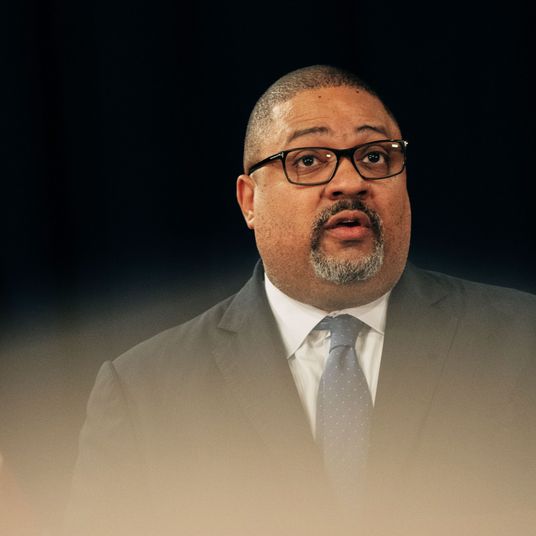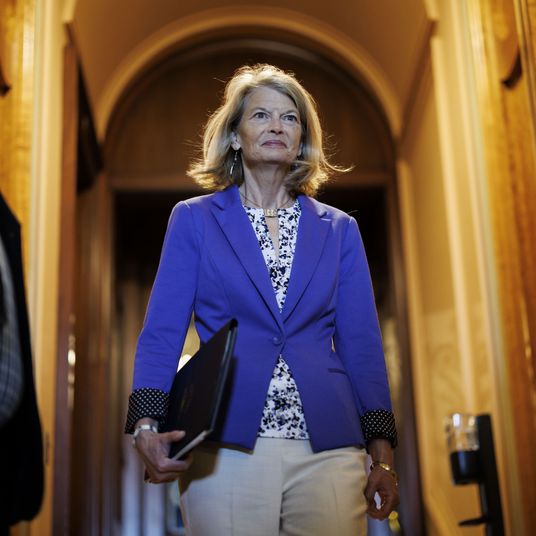
Fresh from the narrow presidential-election victory that he has insisted on calling an “unprecedented and powerful mandate,” Donald Trump’s very first reminder that he is not the king of all he surveys is the necessity of securing Senate confirmation of his key executive-branch appointees, beginning with the Cabinet. The realization seems to have annoyed him.
Almost immediately, he told aspirants to the position of senate majority leader (an election won by John Thune was held on November 13 to fill the leadership post long held by Mitch McConnell, who stepped down) that if they wanted his cooperation, they should be willing to consider “recess appointments” to avoid the necessity of confirmation votes:
Rick Scott bent the knee to this demand instantly, while John Cornyn and Thune said they were open to the idea. But so far, Trump hasn’t moved to push the Senate aside, and his acquiescence (or perhaps involvement) in the withdrawal of the especially troublesome Matt Gaetz nomination to become attorney general could indicate he’s not planning to ram his Cabinet choices through via a constitutionally dubious and politically perilous strategy of forcing and then exploiting a Senate recess.
The Constitution clearly allows the president to temporarily fill vacancies in executive-branch positions when the Senate is in recess, as it often was for months during the early days of the Republic. Such appointments last until the end of the congressional session in which they are made. What’s less clear in the constitutional text is how long a recess must last to trigger recess appointment powers. But in a landmark 2014 decision, the Supreme Court set a “reasonable” threshold of ten days in recess before the president can make such appointments, and further suggested the Senate itself is the judge of when it’s in recess, which means it can bar recess appointments even when senators are not around by convening so-called “pro forma” sessions with no official business. While in recent years, presidents have made recess appointments of a variety of sub-Cabinet positions, no one has yet filled Cabinet jobs that way, much less demanded the Senate adjourn in order to abandon its advise-and-consent responsibilities and let the White House bypass the process altogether.
What Trump seemed to be considering, however, is a mechanism whereby he can force a Senate recess, as the New York Times explains:
Article II of the Constitution allows a president to adjourn one or both chambers of Congress under certain circumstances, including if the House and Senate disagree about when to be in session.
In that scenario, the Republican-led House could pass an adjournment resolution and if the Senate refused to approve it, Mr. Trump could, as the Constitution says, “adjourn them to such a time as he shall think proper.” In theory, he could then make recess appointments. It appears that no president has ever tried that particular maneuver.
So in that scenario, the Senate could go unwillingly into recess with Republicans grumbling but acquiescing with Trump’s plans, triggered by a House vote for adjournment.
There’s where the real trouble with a mass recess-appointments scheme would arise. When the new administration and Congress take office in January, House Speaker Mike Johnson is going to have an extremely narrow margin of control (at present, Republicans have won 219 House seats — one more than the bare minimum for a majority — with three races unresolved, but Democrats are leading in one of them and gaining ground in another). It’s reasonably clear that even if he wants to encourage this scheme, Johnson won’t be able to cajole every single swing-district Republican to cooperate in letting Trump get around even minimum congressional scrutiny of the people he wants running the federal government. As Axios reports, some are already objecting to the idea:
Some House Republicans have deep reservations about recessing the House just to give Trump the power to use recess appointments.
“I’ve already said we shouldn’t be going into recess,” said Rep. Mike Lawler (R-N.Y.).
“It will be something that I’d discuss with leadership first before being public,” Rep. Don Bacon (R-Neb.) told Axios. “I don’t want to say either way out of respect to the Speaker. I owe him to talk to him first.”
What we do know is that Trump did not choose to go to these extreme lengths to impose Gaetz on the Justice Department (assuming Gaetz himself was willing to let Trump use him for such a power play). Presumably, the president-elect can continue to hint at a recess-appointment scheme as his last resort if the Senate doesn’t give him confirmation of his other problematic Cabinet picks such as Pete Hegseth, Robert F. Kennedy Jr., and Tulsi Gabbard. And perhaps he won’t have to use too much pressure in most cases in dealing with a Republican Senate conference that is more eager to show him support than to insist on their prerogatives under the key constitutional doctrine of separation of powers, that essential curb of would-be authoritarians.





























